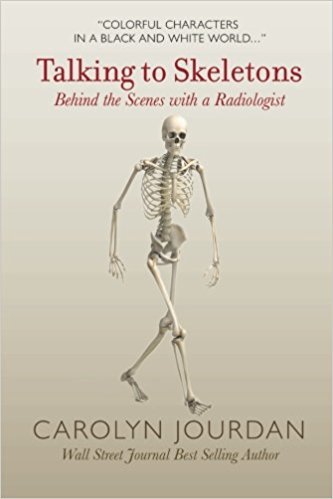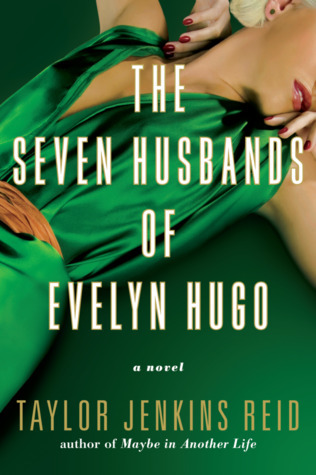While immersed in Rod Dreher’s much-discussed The Benedict Option: A Strategy for Christians in a Post-Christian Nation a few weeks ago, a children’s book startled me with a hopeful connection. My son’s kids had come to visit and I’d turned to reading nature books with them, but as we read and baked and played and read some more, The Benedict Option stayed with me. Dreher’s book speaks to the future these children will inherit. In a spirit of orthodox ecumenism, it asks Christians to assess the effects of expanding secularism and band together to preserve sacred treasure and intensify our witness.
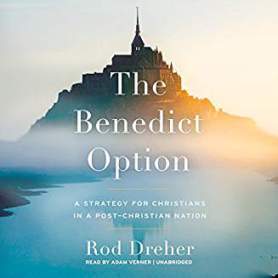 I found much to appreciate in its opening discussion of the minority position Christians now occupy in America, but this section of The Benedict Option left me fearful and dissatisfied. Perhaps I needed a good reality check, a summary of all the hits we’ve taken in recent years along with a tour of their historical underpinnings, but I don’t think that’s it.
I found much to appreciate in its opening discussion of the minority position Christians now occupy in America, but this section of The Benedict Option left me fearful and dissatisfied. Perhaps I needed a good reality check, a summary of all the hits we’ve taken in recent years along with a tour of their historical underpinnings, but I don’t think that’s it.
I’ve felt the edgy encroachment of secularism for decades, yet I’m concerned that Christians still aren’t self-reflective enough about our own role in bringing it about. Perhaps our position wouldn’t look so ominous had we done a better job loving our public square opponents and more vehemently calling out haters wielding Bibles in the streets. That’s not muddying the beauty of chastity. It’s insisting on treating every human being, no matter what they believe, with dignity.
But I’m sure Dreher agrees. He offers a beautiful call to holiness as his book proceeds. By the time I’d finished it, I was inspired and planning fresh action. The Benedict Option sparkles with stories of serious Christians supporting each other in communities of accountability who, in multi-faceted ways, are applying the heart of the gospel: devotion to Christ, active works of mercy and building a loving, life-affirming society. Seeking prayerful silence, helping our young navigate the pitfalls of technology, taking sexual purity seriously and forming schools of rigor are among the exhilarating work we must now take to a new level.
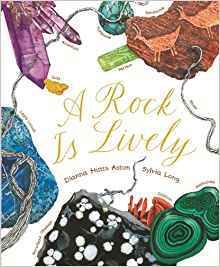 But back to my little visitors. With The Benedict Option very much on my mind, a series of exquisite yet inexpensive nature books I’d purchased to enjoy with them was captivating me. These treasures by author-illustrator team Diana Hutts Aston and Sylvia Long (An Egg Is Quiet, A Nest is Noisy, A Beetle Is Shy, A Butterfly is Patient, A Seed is Sleepy and A Rock Is Lively) inspire deep wonder. Their rich illustrations are a nature-lover’s dream, and they’re chock-full of poetic connections and delightful surprises.
But back to my little visitors. With The Benedict Option very much on my mind, a series of exquisite yet inexpensive nature books I’d purchased to enjoy with them was captivating me. These treasures by author-illustrator team Diana Hutts Aston and Sylvia Long (An Egg Is Quiet, A Nest is Noisy, A Beetle Is Shy, A Butterfly is Patient, A Seed is Sleepy and A Rock Is Lively) inspire deep wonder. Their rich illustrations are a nature-lover’s dream, and they’re chock-full of poetic connections and delightful surprises.
A Rock Is Lively is the series’ most intriguing title, and my grandson took to it immediately. Its inside cover treats the eye to the blended blues and gold-flecked hues of lapis lazuli. “Whoa,” he sighed, reveling in its luster.
A Rock Is Lively is a brilliant little read. Poring over it, the kids and I came to appreciate the ways a rock is galactic, old, helpful, inventive and creative. We bought geodes, cracked them open and mused about the minerals, heat and time it took to produce these crystalline wonders.
We returned many times to that inside cover with its magnified view of lapis lazuli. It is formed, we learned, when the mineral lazurite combines with sodalite, calcite and pyrite and is heated deep within the earth until becoming a brilliant blue.
William Butler Yeats, I recalled as The Benedict Option returned to my thoughts, offered a response to his own generation’s fears at the outset of World War II in his poem, “Lapis Lazuli.” The poet drew readers out of their moment’s hysteria by asking them to consider the rise and fall of civilizations and to ponder the lasting contribution of the arts in providing more permanent things: Lear and Hamlet and all creative responses to the human condition.
“Lapis Lazuli” concludes by focusing on an art object whose Chinese figures are carved into the treasured blue stone, with a bird, “a symbol of longevity” flying over them. The artisan, he marvels, masterfully incorporates the rock’s every fissure and imperfection into his work:
Every discolouration of the stone/Every accidental crack or dent/Seems a water-course or an avalanche…
The Artisan who formed lapis lazuli is still creating us, I realized. Through perseverance under pressure, we are being transformed into far greater treasure. Our destiny is the kingdom of heaven, whose foundation wall is described in the glowing, grasping words of St. John’s vision as “decorated with every precious stone.” Precious. Forged in fire.
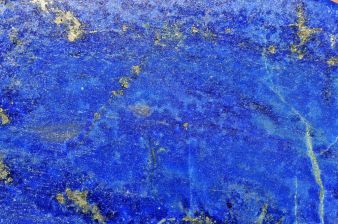 By Parent Géry – Own work, CC BY-SA 3.0 via Wikipedia Commons
By Parent Géry – Own work, CC BY-SA 3.0 via Wikipedia CommonsThe Benedict Option challenges us to move beyond fear and protect goodness, truth and beauty no matter how the cultural moment tempts us to hysteria. A loving counterculture, vibrant as lapis lazuli, forged in the heat of opposition and disdain, strikes me as a beautiful possibility for the faithful in the coming years. It makes me want to pursue Benedict Option possibilities with as many counter-cultural souls as will engage.
I don’t agree with Dreher’s every point. As a Catholic, I believe the historic Church is the only institution that can, with bold leadership, offer the most authentic Christian clarity and consistent, still-advancing mission during these new and challenging times. The Benedict Option gives me hope, however, that the devoted orthodox of varying Christian roots could meet on common ground to support each other in preserving and even producing new beauty, as our forbears always have, for brighter, more open day.
Which is why intentional communities must ever know that our purpose outward: to “shine like lights in the world” as we offer the word of life. St. Paul, who bore the lashes of Roman whips and endured imprisonment, understood that “this momentary light affliction is producing for us an eternal weight of glory beyond all comparison .” Perseverance is preparing us to shine before the Father: distinct, varied, treasured for our particularities and loved beyond the telling.
Should faithful Christians cluster more intentionally to work out our salvation and preserve our culture, as The Benedict Option suggests? Can we do so and remain engaged with secular society? We can. And we must not fear the forge. It can make us more beautifully shine, not for ourselves, but to delight and draw others to the Beauty that never fades.

Have you read The Benedict Option? I’d love to talk about it, especially about the suggestions and stories that make up the book’s core. Please comment here or on Sparrowfare’s Facebook page (click on the Facebook icon to follow the feed).
Yeats is a fascinating poet with an unorthodox but deep spiritual sense. For a brief background (with a sense of humor), see this video.
If you love beautiful children’s books, check out the websites of Diana Hutts Aston and Sylvia Long.
Bishop Robert Barron discusses The Benedict Option on the Word on Fire podcast here.
Featured image by Enric at Pixabay.com.
Don’t miss new posts! Receive fresh inspiration in your inbox by placing your email address in the box in the sidebar.
Please share Sparrowfare!
Share this:



